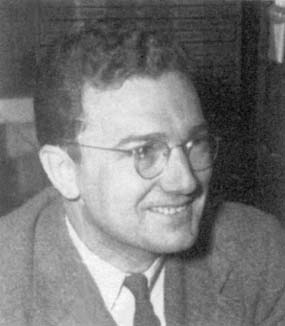


 تاريخ الرياضيات
تاريخ الرياضيات
 الرياضيات في الحضارات المختلفة
الرياضيات في الحضارات المختلفة 
 الرياضيات المتقطعة
الرياضيات المتقطعة
 الجبر
الجبر
 الهندسة
الهندسة 
 المعادلات التفاضلية و التكاملية
المعادلات التفاضلية و التكاملية 
 التحليل
التحليل
 علماء الرياضيات
علماء الرياضيات |
Read More
Date: 3-11-2017
Date: 3-11-2017
Date: 3-11-2017
|
Died: 7 March 1964 in Princeton, New Jersey, USA

Samuel Wilks attended school in Denton, then studied architecture at North Texas State Teachers College. He received a B.A. in architecture in 1926. However his eyesight was not too good, and he feared that this would be a handicap if he pursured architecture as a profession so he decided on a career in mathematics.
During session 1926-27 Wilks taught at a school in Austin, Texas and at the same time he began to study mathematics at the University of Texas. Here he was taught set theory and other courses in advanced mathematics by Robert Moore and he took courses in probability and statistics with E L Dodd. Wilks received an M.A. in mathematics in 1928 and during this time, in fact from 1927 until 1929, he was an instructor in mathematics.
Wilks was awarded a fellowship to the University of Iowa where he studied for his doctorate. Here H L Rietz, who supervised his doctorate, introduced him to Gosset's theory of small samples and R A Fisher's statistical methods. After receiving his doctorate in 1931, on small sample theory of 'matched' groups in educational psychology, he continued research at Columbia University in session 1931-32.
In 1932 Wilks went to England where he spent a period in Karl Pearson's department in University College, London. In 1933 he went to Cambridge where he worked with John Wishart, who had been a research assistant to both Pearson and Fisher.
He was appointed instructor of mathematics at Princeton in 1933. He was to remain there for the rest of his career, being promoted to professor of mathematical statistics in 1944.
Wilks's work was all on mathematical statistics. His early papers on multivariate analysis were his most important, one of most influential being Certain generalizations in the analysis of variance. He constructed multivariate generalisations of the correlation ratio and the coefficient of multiple correlation and studied random samples from a normal multivariate population.
Three papers in 1931-33 concerned deriving the sample distributions of estimates of the parameters of a bivariate normal distribution when some of the individuals gave observations on both variables, some others on only one. In 1935 he investigated multinomial distributions. He advanced the work of Neyman on the theory of confidence-interval estimation. In 1941 Wilks developed his theory of 'tolerance limits'.
Wilks was a founder member of the Institute of Mathematical Statistics (1935). He was editor of the Annals of Mathematical Statistics from 1938 until 1949.
Wilks served the U.S. government in many roles. Among many other similar tasks, he worked for the U.S. Department of Agriculture and was a member of the National Defense Committee. In 1947 he was awarded the Presidential Certificate of Merit for his contributions to antisubmarine warfare and the solution of convoy problems.
Articles:



|
|
|
|
مقاومة الأنسولين.. أعراض خفية ومضاعفات خطيرة
|
|
|
|
|
|
|
أمل جديد في علاج ألزهايمر.. اكتشاف إنزيم جديد يساهم في التدهور المعرفي ؟
|
|
|
|
|
|
|
العتبة العباسية المقدسة تنظّم دورةً حول آليّات الذكاء الاصطناعي لملاكاتها
|
|
|